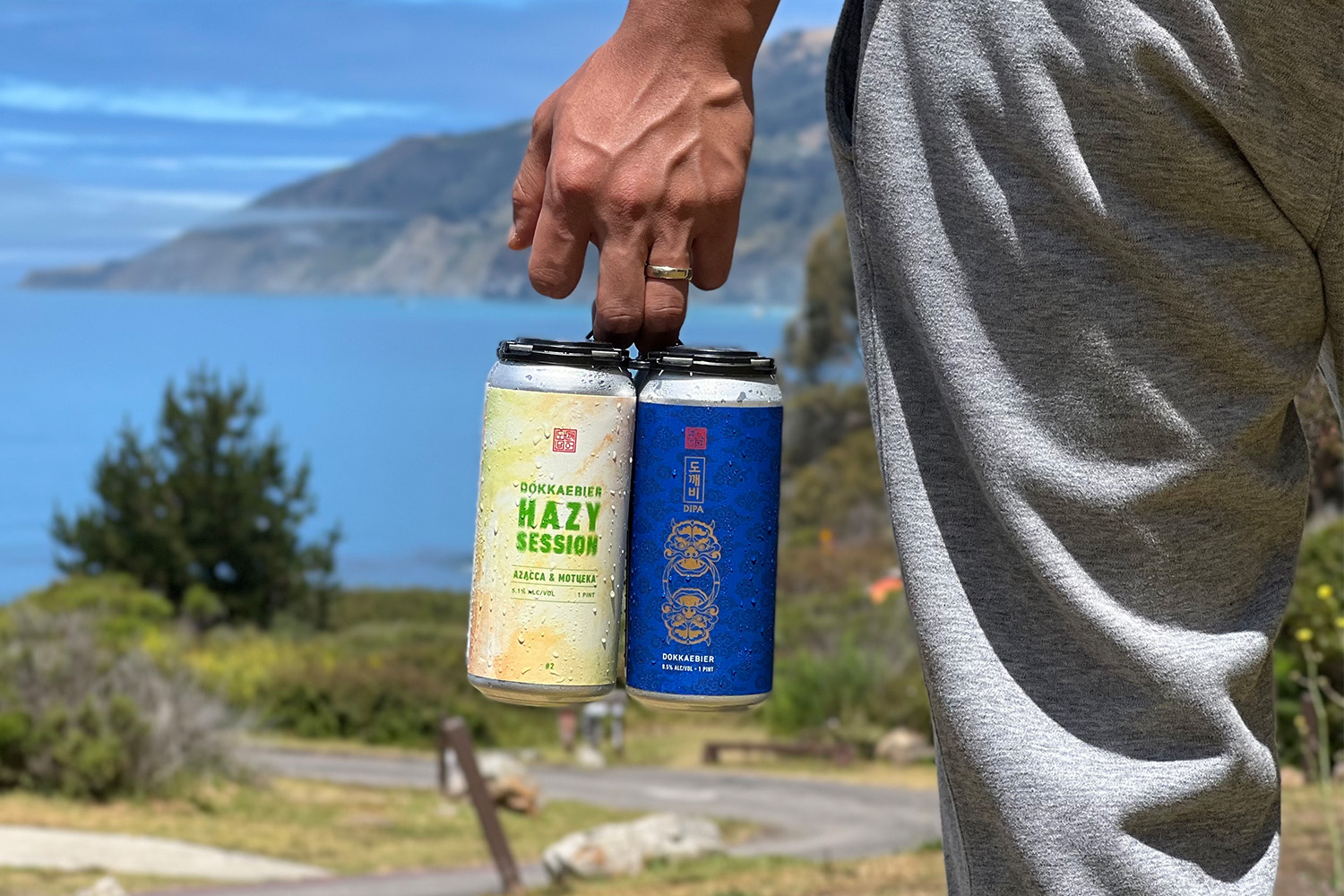“They come out at night, then they’II drink and hang out with people,” says YoungWon Lee, describing the mythical Korean creatures that give his craft beer brand its adventurous spirit. These are the dokkaebi, namesake of Lee’s award-winning Dokkaebier brand — the legend of last year’s LA Beer Festival.
Inside Hook had a proper sit-down chat with Lee, during which we talked about the Korea-inspired, Korean-run brewery and his experiment-minded approach, as well as some good news for everybody: Look for Dokkaebier to open doors on a physical location in Oakland in July, exact date TBD.
InsideHook: Tell us about finding your way into the beer industry.
YoungWon Lee: I’ve got 14 years working in the alcohol industry — I used to run an import distribution business in the South Korean market. I had an opportunity to come back to the States about five years ago. Working in the beer industry here, I realized that every time I went to a beer festival, I was literally the only Asian guy standing there.
Fast forward to two and a half years ago, and I decided to start my own.
I thought this was a perfect time. I realized that, statistically, Asian Americans make up less than two percent [of those working] in the entire beer industry. And even further, I think that even that 2 percent are usually silent shareholders or like, they’re working in the industry, but it’s [part of the] brand. We’re the first Asian brand, in terms of craft beer — from the design and the packaging and the name to the branding, and then the taste is Asian driven. I thought if anyone’s gonna do it, I’m gonna do it. I’m not gonna have a random, typical, stereotypical white guy with a beard come out with a kimchi sour. I better do it. So that’s how we came to the product.
Subtle touches on your can’s design connect Korean lore with the present. Can you tell us about them?
I wanted to have some kind of root in Korean culture. At the same time, I wanted to be very easily approachable. Our name, Dokkaebier, comes from dokkaebi, a Korean mythical creature that hides during the daytime. They come out at night, then they’II drink and hang out with people. If you look at our packaging, you’re gonna see a dokkaebi hiding somewhere in these ingredients. The Mango Blonde [Ale]? You have a face in the mango. On the Rice Kolsch, you would see a face and rice bowl. There is someone hiding, but they’re kind of mischievous. It’s a shapeshifter. That’s what I wanted to do because we always wanted to be innovative and try all different ingredients. I wanted that character to be the “dokkaebi” of what we do and the culture of it. I wanted to be adventurous and shapeshift and try out different ingredients because a lot of them are never used in beer.
You have a lot of Asian inspired flavors that aren’t even available in beers in Korea. You also came out with a fun flavor that’s in a popular Asian show. Can you tell us about that and any cool beer projects in the works?
There’s a Korean candy, dalgona, in Squid Game. I made 50 pounds of it and put it in the beer. It’s our Batch #27 [all of their beers have a number with them when they’re released], called the Dalgona Ale.
I’m also in conversation with a ramen company called Shin Ramyun. We’re talking to them and trying to develop a recipe using the noodle. That’s sort of a work in progress at the moment.
This isn’t the first film inspired brew you did. Tell me about how you’re using your vision to fuse representation that matters in your beers.
We did one beer last year, called Minari after the Korean movie that won one of the Oscars. We used the actual minari, which is a water celery seed in our beer to represent the immigrant life into the movie and the story of it. We want to tell these people to use me an opportunity to kind of put your voice out there.
For us, [since we] have the distribution, it’s easier for me to design a label and put it on the shelf — and maybe one of our fans or a person who’s just looking at the shelf sees the label and is inspired by it. I want to do that. I want to be the brand that feels brings community together and you know, make the voices heard.
This article was featured in the InsideHook SF newsletter. Sign up now for more from the Bay Area.
